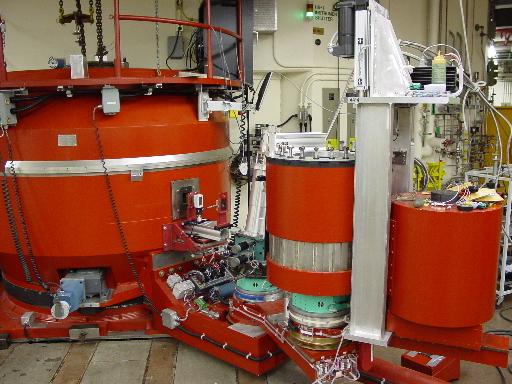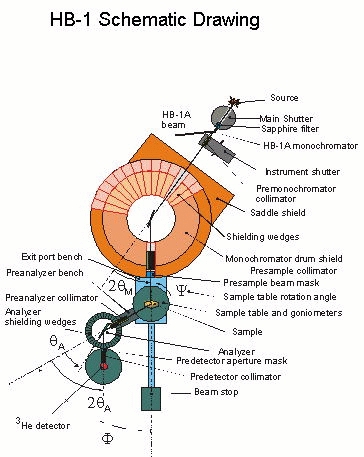The Polarized Triple-Axis Spectrometer at HFIR

Polarized Triple-Axis Spectrometer (HB-1).
Of the four triple-axis spectrometers installed at HFIR, the HB-1 instrument is specifically designed for polarized-beam measurements, but is also a highly efficient general-purpose unpolarized neutron spectrometer. Upgrades of the beam tube and monochromator drum enabled vertical focusing of the incident neutron beam, yielding an almost 3-fold increase of neutron flux at sample position. The high flux and a wide range of incident energies, between 5 and 120 meV, make the instrument particularly well suited for polarized studies of magnetic excitations in CMR and HTSC materials, “bad” metals, quantum magnets, magnetic multilayers and commercial magnetic alloys. A good example is the study of famous “resonance” excitations in certain high temperature superconductors, thought to play a crucial role in electron pairing. In the unpolarized mode HB-1 becomes a state of the art tool for studying various types of excitations and critical phenomena in a broad variety of materials, from shape memory and superelastic alloys to thin films and heavy fermion systems.

The choice of two monochromator plugs gives this instrument great versatility. The polarizing plug accommodates the world’s largest 18 cm tall and 25 cm wide variable vertical focusing Heussler alloy monochromator with a vertical guide field. The unpolarized plug accommodates a pyrolitic graphite (PG) monochromator with variable vertical focusing.
The instrument offers a choice of Heussler alloy (for polarized experiments) and PG (unpolarized or half-polarized) analyzers. The current design allows for future installation of a multi-blade horizontally focusing analyzer system.
Polarized-beam experiments can use a set of Mezei-type “flipper” devices that are fully controlled by the instrument software. The magnetic guide field at sample position is generated by a Helmholz-type coil system. The field can be rotated in three dimensions electronically by adjusting the current distribution in the coils, which is also fully automated. The polarized setup is designed to be compact enough to accommodate all available sample environment equipment, including a 4He/3He dilution refrigerator, standard 4He flow cryostats, a 4He cryofurnace, and a variety of closed-cycle refrigerators.
Applications
- Spin waves in ordered magnetic materials
- Exotic excitations in low-dimensional, molecular, itinerate, and other "quantum" magnets
- Spin and lattice excitations in high-Tc superconductivity, colossal magnetoresistance materials, and multiferroic systems
- Spin density distributions in magnetic compounds
- Phonon dispersion curves in alloys and phonon-driven phase transitions

